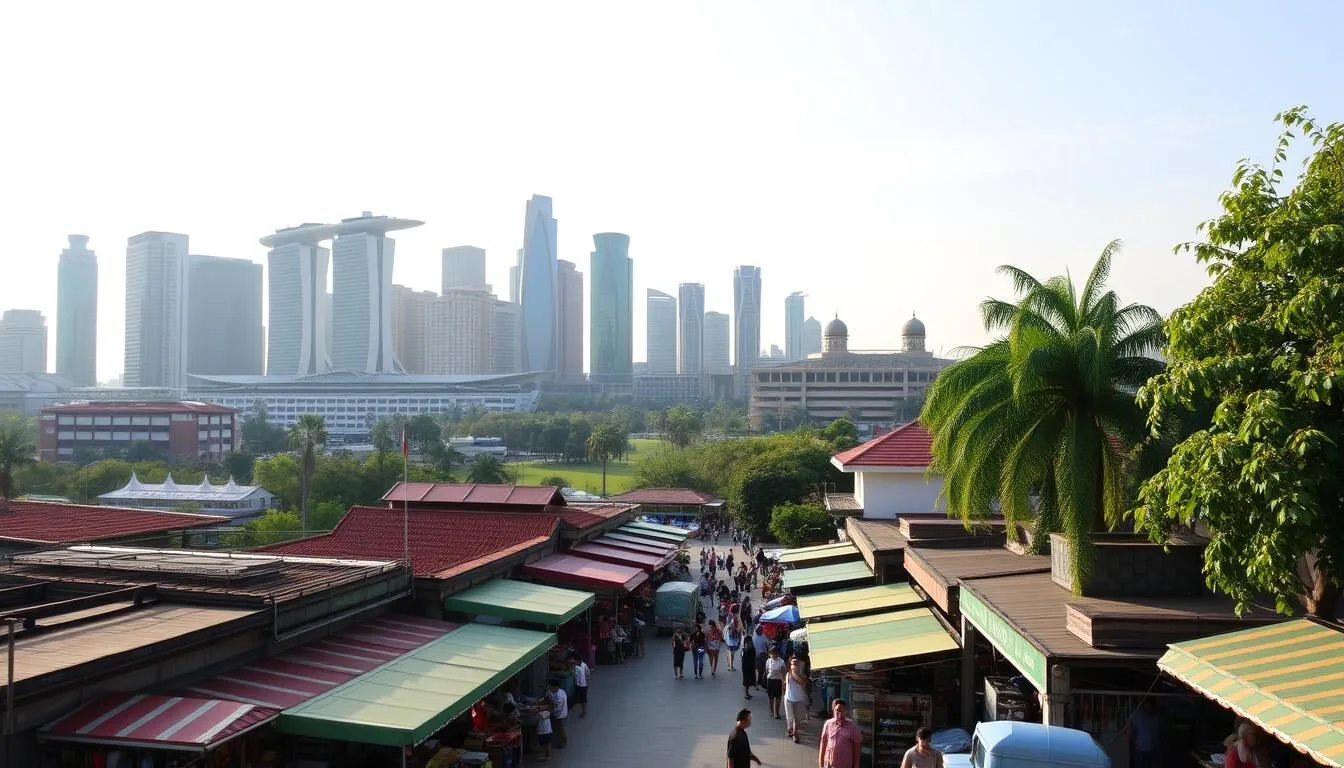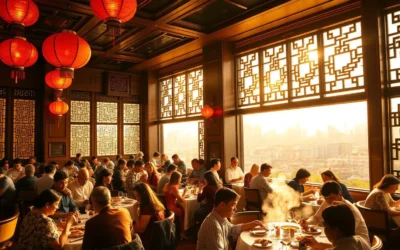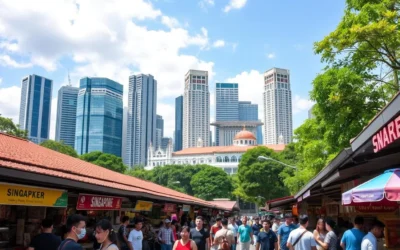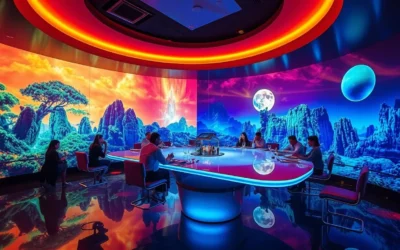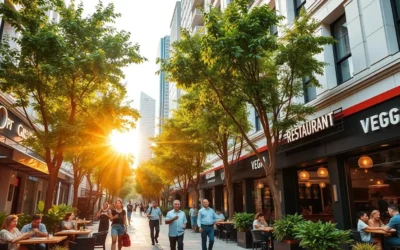✓ Accommodations✓ Flights✓ Rental Cars✓ Tours & Activities
You might be surprised to know that Singapore is a country with a unique blend of cultures, making it a fascinating destination for travelers.
With its strict rules and spotless streets, this city-state is often perceived as being too perfect. However, beneath its gleaming facade lies a complex cultural landscape that is both intriguing and shocking to first-time visitors.
As you explore this multicultural country, you’ll discover the surprising aspects that make Singapore so distinctive, from its cultural practices to its social norms.
Cultural Surprises That Await in Singapore
The moment you arrive in Singapore, you’ll be struck by the unique cultural tapestry that defines this city-state. Singapore is a melting pot of cultures, with influences from Chinese, Malay, Indian, and Eurasian communities, creating a rich and diverse cultural landscape.
A Melting Pot of Cultures and Languages
Singapore’s cultural diversity is reflected in its languages, cuisines, and traditions. You’ll hear a variety of languages being spoken, including English, Mandarin, Malay, and Tamil. This diversity is also evident in the food, with popular dishes like Chili Crab and Hainanese Chicken Rice showcasing the blend of culinary influences. As you navigate through the city, you’ll notice the different cultural practices and festivals celebrated throughout the year.
The Kiasu Mentality and Fast-Paced Lifestyle
The term “kiasu” originates from the Hokkien dialect, meaning “afraid of losing out.” This mentality is prevalent in Singaporean society, driving behaviors such as queuing for popular products or competing for the best parking spots. You’ll observe that people walk fast, talk fast, eat fast, and work fast, reflecting a society that values productivity and efficiency. This fast-paced lifestyle can be quite a shock for visitors, but it’s an integral part of the Singaporean culture.
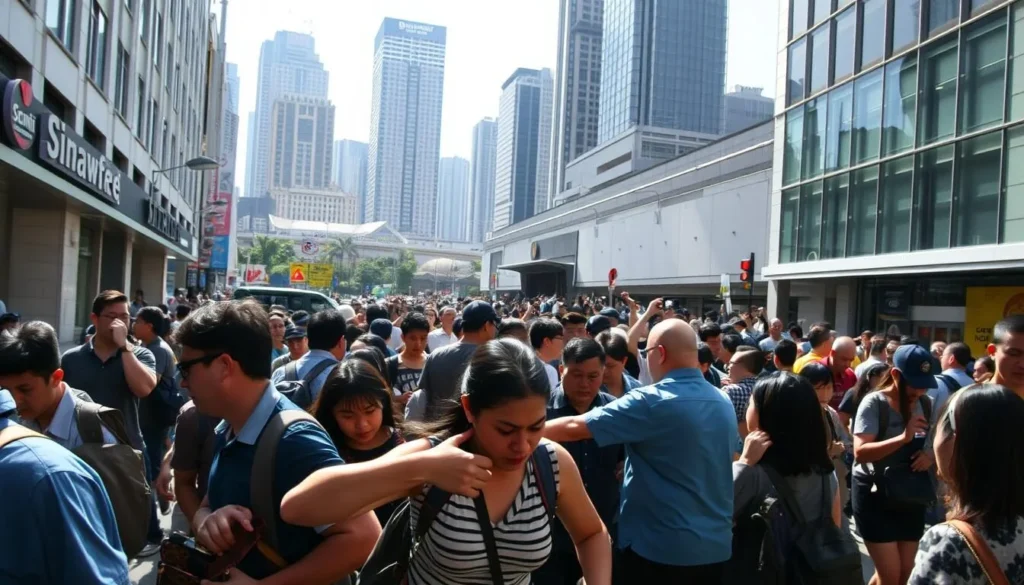
Some aspects that might surprise you include the competitive nature of Singaporean society, where parents enroll their children in multiple enrichment classes to stay ahead. You’ll also notice that despite being willing to queue for things they value, Singaporeans often display impatience in other contexts, creating a fascinating cultural contradiction.
Singapore, Singapore: What Visitors Find as Shocking!
Singapore is a melting pot of cultures, but it’s the unusual rules, chope-ing culture, and queuing phenomenon that will likely leave you surprised.
The Infamous Rules and Fines
Singapore is known for its strict rules and hefty fines, a aspect that might shock visitors. From littering to eating on public transport, the city-state has rules in place to maintain cleanliness and order. You might be surprised by the severity of the fines, but they are a testament to the government’s efforts to keep Singapore spotless.
Chope-ing Culture and Tissue Paper Reservations
In Singapore, it’s common to see people reserving tables or seats with tissue paper or other objects, a practice known as “chope-ing.” This cultural quirk might leave you puzzled, but it’s a reflection of the competitive nature of Singaporeans. You’ll find that this practice is not limited to restaurants; it’s also seen in hawker centers and other public areas.
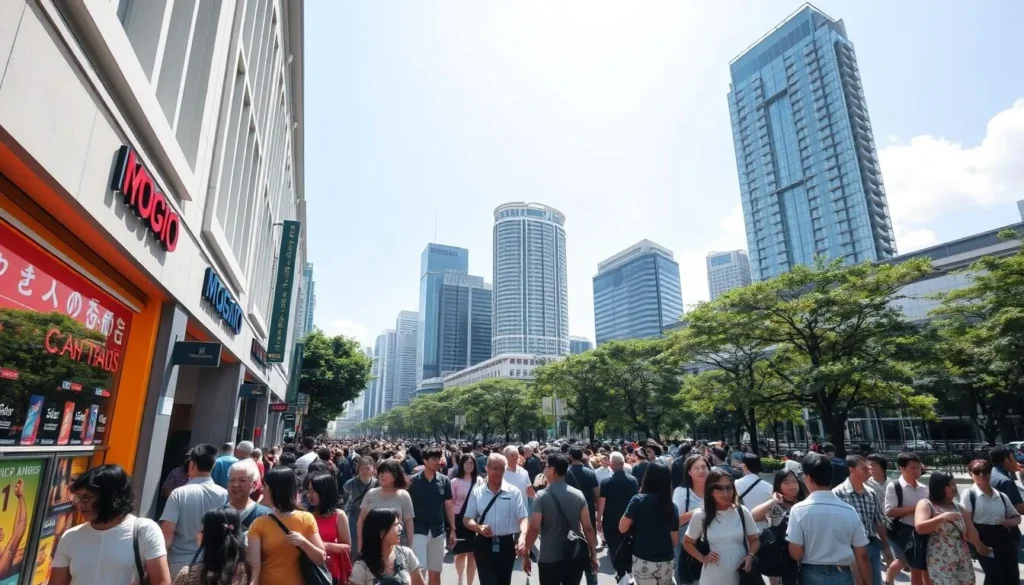
The Queuing Phenomenon
You’ll notice that in Singapore, queues are a common sight. People queue for popular food stalls, limited-edition products, and even for new restaurant openings. This queuing phenomenon is a reflection of the “kiasu” mentality, where people don’t want to miss out on something good. You might be astonished by the willingness of people to wait for hours, sometimes overnight, for things they value.
| Cultural Practice | Description |
|---|---|
| Chope-ing Culture | Reserving tables or seats with objects like tissue paper |
| Queuing Phenomenon | Waiting in line for popular food stalls or limited-edition products |
| Strict Rules | Maintaining cleanliness and order through hefty fines |
Practical Shocks for First-Time Visitors
First-time visitors to Singapore often find themselves surprised by the practical aspects of navigating this vibrant city-state. From the humid tropical climate to the unique food culture and payment systems, there’s a lot to take in.
Weather and Climate Challenges
Singapore’s weather is characterized by high humidity and temperatures that remain relatively constant throughout the year. Be prepared for sudden rain showers by carrying an umbrella. The tropical climate can be a shock for visitors from cooler regions.
Hawker Centers and Food Culture
One of the highlights of visiting Singapore is its hawker centers, where you can sample a wide variety of local dishes. Be prepared to use cash at many of these centers, as not all vendors accept credit cards or other digital payment methods.

Cash vs. Cashless Society
Singapore presents a unique contrast between its modern, cashless payment systems in shopping malls and tourist areas, and the prevalence of cash transactions at local hawker centers and small businesses. You’ll need to have both cash and cards handy, especially when using public transit or dining at local eateries. While many places accept credit cards, having some local currency for smaller purchases is advisable. Interestingly, Singapore’s consumer culture is also reflected in its numerous malls and the cultural significance of the “5 Cs” (Cash, Car, Credit Card, Condominium, Country Club).
- You’ll need to adapt to a dual payment ecosystem, where both cash and cashless options are used depending on the context.
- The public transit system accepts credit cards and specialized stored-value cards like EZ-Link, making it convenient for travelers.
- Singapore’s love for consumer goods is evident in its many shopping destinations, from high-end malls to local markets.
Conclusion: Embracing Singapore’s Unique Charm
The initial culture shock of visiting Singapore soon gives way to appreciation for its distinct character. You’ll come to appreciate that the aspects of Singapore that initially shock visitors are often the same features that make it such a fascinating and functional society.
Singapore’s unique food culture, centered around hawker centers, offers not just delicious meals but a window into its multicultural identity. As you navigate the city’s efficient transit systems and sample food from its hawker centers, the initial culture shock transforms into genuine appreciation for Singapore’s charm.
Whether you’re visiting for a few days or planning a longer stay, Singapore offers an experience that challenges preconceptions and demonstrates how a small country can make a big impression on its people and visitors alike.
The above is subject to change.
Check back often to TRAVEL.COM for the latest travel tips and deals.
